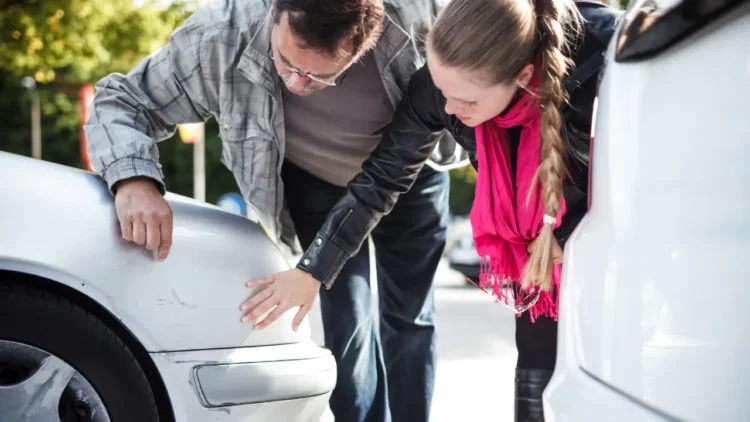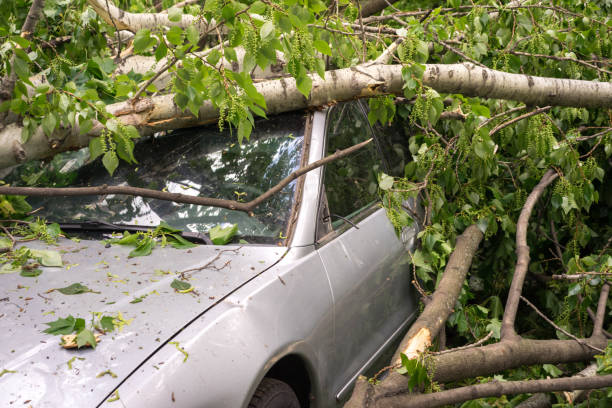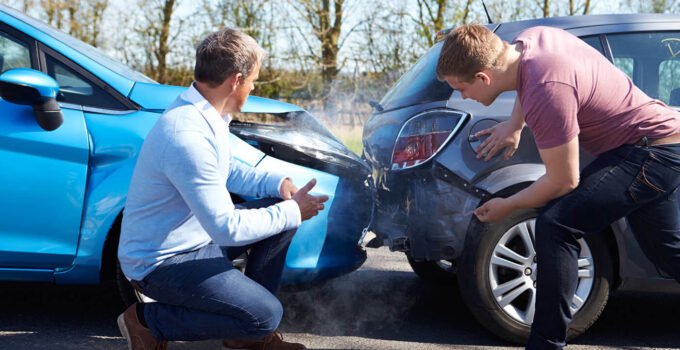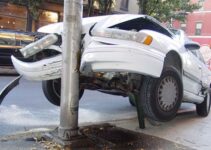Insurance companies are in business to make a profit. When they have to pay out on a claim, this profit decreases. To avoid this loss of profit, they often raise the rates of the driver responsible for the accident. The rise in rate depends on the insurance company and the type of accident.
Fortunately, some insurance companies now offer accident forgiveness. A person won’t see their rate increase if this is their first accident or if it is a minor one. For those who don’t have accident forgiveness or are involved in a major accident, what can they expect?
Page Contents
Who is at Fault?

Source: bankrate.com
Car insurance rates usually rise after an accident in which the insured is deemed at fault. The insurance company views the driver as a higher risk following the accident and will raise the rate accordingly. However, even those who are not at fault for an accident might find their rate increases. When the driver’s personal insurance must cover the claim regardless of fault, it may choose to raise the rate. The best way to determine this is to speak with atlantaadvocate.
Factors That Play a Role in the Rate Increase
Insurers consider several factors when determining how much a driver’s rate should increase following an accident. They look at the person’s driving record and how many claims they have filed in recent years. Age and gender play a role in a driver’s premium in certain states. Younger drivers will often see the highest increase because they have less experience behind the wheel. Insurers consider them a higher risk for this reason. However, the rate increase also varies by the insurance company.
Location and Its Role in Car Insurance Premiums

Source: forbes.com
Each state determines its laws regarding auto insurance. This means a person in one state may see a much lower rate hike than a person in another state. Wyoming drivers typically see the smallest rate hike following an accident of either type. Drivers in North Carolina will be hit with the highest average increase when they are deemed responsible for an auto accident involving property damage.
However, drivers in California see the highest rate increase if they are responsible for an accident that led to injuries. Insurance in California almost doubles if a person is responsible for this type of accident.
A Los Angeles personal injury lawyer shares: Car accidents typically have a notable impact on insurance rates in California, as is the case in many regions. California operates under a fault-based system for car accidents, meaning the driver responsible for the accident generally bears the financial burden through their insurance.
What Increase Can a Driver Expect?
Forbes Advisor reports the effects of a car accident can be far-reaching. A person will find the financial aftermath lasts for years, even if the accident happened in a split second. Drivers responsible for an accident with property damage can expect to see an average rate increase of 45 percent. If the accident led to injuries, the rate increase is an average of 47 percent.
However, which insurance company the driver uses also plays a role in this rate increase. State Farm, for example, has an average rate increase of 21 percent following an accident involving property damage. Geico, in contrast, raises drivers’ rates by an average of 73 percent following an accident with property damage.
Rates increase slightly more for drivers responsible for accidents involving injuries. State Farm raises a driver’s rate by 22 percent on average. Geico hikes their rate by 77 percent.
Certain circumstances may increase a driver’s rate more than the average. If the driver was drinking at the time of the accident, they will be charged a significantly higher rate. Serious injuries or extensive property damage can also lead to a rate hike that is larger than average.
On the other hand, certain states don’t allow insurers to raise a driver’s rate if the accident is under a certain amount. Massachusetts is a good example of this. If the total for the accident is $1,000 or less, the driver won’t see a premium increase regardless of who was at fault for the accident.
New York has a similar law. Insurance companies cannot increase a driver’s rate if the total cost of the accident was under $2,000 and nobody was injured in the accident. Nevertheless, if a driver has multiple accidents, these laws often don’t apply.
How Long Will a Driver Pay the Increased Rate?
Drivers want to know how long they will be penalized for an accident they caused. Again, this varies by the state and the insurer. However, the driver can expect to pay the increased rate for several years following the accident. Insurance companies review driving records for several years when determining premiums. The rate should go down again after approximately three to five years, although the insurance company has the final say in when it drops.
Comprehensive Claims

Source: istockphoto.com
What about comprehensive claims for damages not caused by an accident? People often wonder if they will pay more if they file a claim with their personal insurer for something other than an accident. For example, what if their car is damaged by a falling tree limb?
The insurance company may choose to raise a driver’s rate if their vehicle is damaged by an act of nature, vandalism, theft, and more. However, the rate increase typically won’t be as high as it would be if the vehicle were involved in an accident. The reason insurance companies may raise rates in this situation is they feel one comprehensive claim can be an indicator of a higher risk of future claims.
Why Are Insurance Companies Allowed to Charge Higher Rates After an Accident?
Insurance companies determine premiums based on data they have collected over the years. Statistics show one accident is a predictor of future accidents. As a result, they take on a higher risk by continuing to insure the driver. Multiple claims filed within a short period also indicate a higher risk and may lead to a rate increase.
Anyone who has been involved in an accident should consider shopping around for new insurance. Although all insurers look at a person’s driving record when determining the premium, they may weigh the factors differently. Switching to a new provider could save the driver money, even with claims on their record. In addition, drivers should compare insurance rates regularly to make certain they are getting the best deal for the desired coverage. Doing so could save a driver a large sum of money over time. It never hurts to try.




